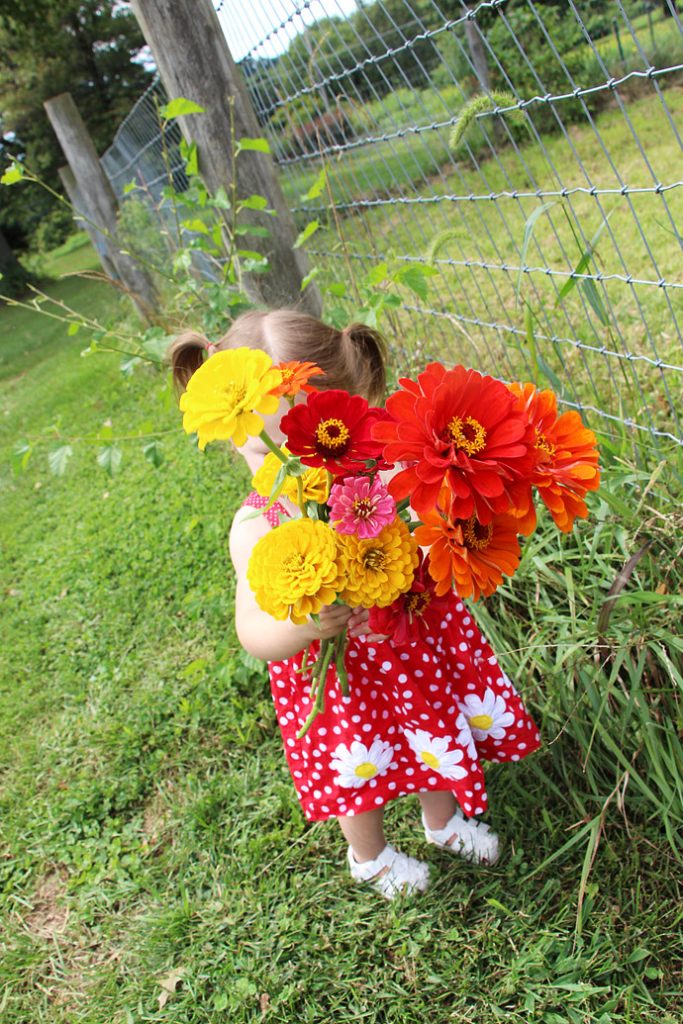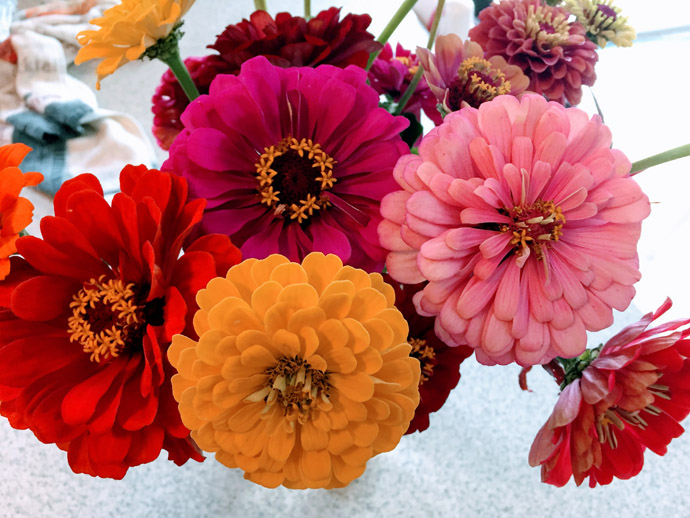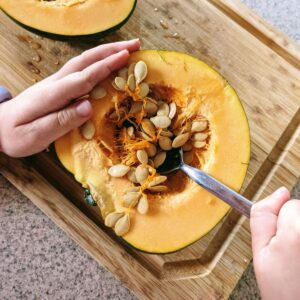How to Deadhead Zinnias in Pots (3 Simple Steps)
Do zinnias need deadheading? That depends. Would you like to have more flowers? I’m sure it’s a resounding YES! Let’s get to it then – I’ll tell you how to deadhead zinnias in pots or in your garden.
But first, let’s cover some of the basics.
If you aren’t familiar, check out my complete guide to what is deadheading!
Should You Deadhead Zinnias?
The process of deadheading zinnias – or even simply cutting some flowers for bouquets – encourages new blooms. If you’d like to cut fresh zinnias all summer and fall long, it’s a good idea to deadhead or cut and come again.
You can deadhead zinnias each week when you go to cut new fresh flowers for your kitchen, bathroom, or surprise vases for your friends and neighbors. While deadheading is not required, it can still make positive impacts on the plants.

Benefits of Deadheading Zinnias
Removing spent flowers from zinnia flowers brings numerous benefits to the garden, including:
- Encourage new blossoms.
- Extend the growing season.
- Improve the look of your garden space.

Because zinnias are annual flowers, they don’t come back automatically every year. This means you can do a few thing to improve your chances of repeat zinnias.
- Let the last flowers go to seed and avoid deadheading.
- Save these for seed for the next growing season.
- Alternatively, scatter the zinnia seeds from the last blossoms allowed to exist in hopes of germinating zinnias next season.

Zinnia Deadhead Tips
- When zinnias are fully brown and crunchy, they should be ready for seed saving.
- Cut zinnias above the leaf node so more flowers will grow from the stem where the flower cut is located.
- If your zinnias are very prolific, you may not need all of them for seed saving. Use your discretion.
- Snip off the spent blooms with nippers, scissors, or pruners.
When you deadhead zinnia flowers, you promote better growth and more prolific blooms.
Make a point to deadhead zinnias when you have time and you’ll enjoy the rewards of more and more blossoms throughout the growing season.

When to Deadhead Zinnias
Begin to deadhead zinnias after the blooms begin to fade. You can also cut flowers regularly throughout the growing season for fresh-cut flowers inside and special bouquets for your friends or neighbors.
- It may be a good time to deadhead zinnias when you will be dropping off your yard waste at the municipal collection location.
- Anytime after the blooms fade will be fine for deadheading zinnias.
- Consider letting some of the spent flowers remain on the plant at the end of the growing season so you can have some seeds for next year!


How to Deadhead Zinnias
It’s easy to deadhead zinnias at home in your garden or in pots. Try these steps:
- Inspect your garden and look for spent blooms. (You can also remove fading blooms.)
- Use your scissors or garden shears to cut back the dead zinnia flowers.
- Collect up all the spent blooms for composting or seed saving, depending on maturity.

Deadheading Zinnias in Pots
Zinnias often attract pesky critters like groundhogs and woodchucks, who love to feast on the pretty flowers and their stems and leaves.
If you find your garden in this predicament, you may want to transfer some of your zinnias to pots.
Deadheading zinnias in pots is just as easy as deadheading zinnias in the garden.

The bonus is that your plants are better protected from garden pests that may do more than just deadheading if you aren’t on high alert.
Learning how to deadhead zinnias in pots is simple. Begin deadheading by snipping off spent blooms and removing them from the area. New growth, and eventually flowers, flowers should appear from the leaf joints on the stem.
Compost the dead flowers or search for seeds you can scatter or save for next season!


Deadhead zinnia flowers to prolong flowering in the garden, raised beds, or in containers and pots. Imagine how lovely it will be to extend the flowering season every year!


If you enjoyed this post, you may also enjoy our guide on How to Deadhead Sunflowers. These cheerful blooms also work wonderfully in your summer bouquets.
Our website features affiliate links to products that we personally believe in. If you make a purchase from a link on our site, we may earn a small commission at no cost to you. Thank you! This helps our girls chase their garden dreams! Thanks for your support. (View full affiliate disclaimer at the end of the page.)
And, if you love Zinnias as much as I do – I HAVE to tell you about this post – these are my favorite zinnias in pictures!
Do you love zinnias as much as we do?! We would love for you to share the love in social media or leave us a comment about your experiences deadheading zinnias.






Thank you so much for this information. I am new to Zinnias, though I have always loved them! So I wasn’t really sure how to deadhead them properly. You are so clear in your descriptions and directions, it is very helpful!
Happy gardening!
Hi Kris! Thank you so much for your kind and thoughtful feedback – I am so happy to hear my article and instructions were helpful. Zinnias are one of my favorite flowers and I always love connecting with others who grow them. You should be able to save the “green” seeds when you deadhead some of those spent blooms – I’ve just begun researching about breeding zinnias and hope to post on that soon. Please feel free to ask if you have any other questions! 🙂 Happy gardening! – Kate
I am transplanting zinnias from flat. Plants are 6″ to 10″ high with flowers. Should I remove the flowers when replanted? Thanks, Ralph
Hi Ralph, thanks for stopping by – great question! So far I have not removed the flowers when transplanting, but if I noticed plants suffering from heat or not enough water, I do cut them back and it’s much easier for them to rebound. You don’t have to but – you can cut and enjoy the flowers indoors in a vase if you like – more will grow! 🙂 Especially if you transplant and notice any signs of the plant going into shock or wilting, etc., then I would cut the flowers and bring them in. Your zinnias will bush out with new stems shortly! If you like, try cutting flowers off one plant and leaving them on another and track how both progress over the summer! 🙂 Hope this helps! Happy Gardening!